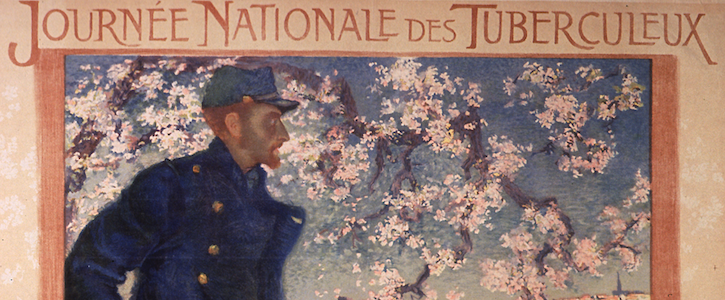How Telehealth Halted a Pre-Hurricane Tuberculosis Outbreak
Before the initiative, the disease had killed 6 men in a mental health facility.

Public domain image has been resized. Courtesy of the US National Library of Medicine.
Your smartphone can help stop a tuberculosis (TB) outbreak.
Of course, the effort requires more than FaceTime, but the use of video directly observed therapy (DOT) has proved time and again to be effective at combating the spread of the disease. Video DOT protocols enable public health officials to monitor patients when they take their medication, ensuring greater compliance rates, according to reports by the CDC.
The latest example occurred in Puerto Rico, months before Hurricane Maria battered the island territory, when the mobile health company emocha allowed health workers to use its video-enabled DOT platform at no cost, curbing a recurring outbreak that had begun in 2010, according to the CDC. By last summer, medication adherence rates for 17 patients with forms of TB broke 80%, the recommended rate, and “all patients with active TB disease have shown clinical signs of improvement,” the CDC wrote in its Morbidity and Mortality Weekly Report.
“When emocha was notified of the outbreak, we knew our technology could be used to help public health officials stop the spread of TB in a place where it is difficult to administer in-person DOT,” Sebastian Seiguer, emocha’s CEO, said in a statement. “We are proud to have worked with such dedicated partners and play an important role in helping patients complete treatment.”
Shortly before the news, the CDC issued a report on how video-enabled DOT controlled the spread of TB in Texas during and after Hurricane Harvey. Agency officials found that the technology “can help ensure TB treatment completion when regular treatment options have been disrupted by a major storm or other disasters.”
Although the hurricanes that would pound Puerto Rico were months away when emocha brought its technology there, a similar puzzle existed. The place where the TB outbreak had festered for nearly 7 years was an isolated home for men with mental illnesses, more than an hour round trip from the monitoring clinic. The facility had also suffered staff shortages, according to the CDC.
That barred the Puerto Rico Department of Health from engaging in daily, in-person DOT, a measure that is crucial to keeping outbreaks at bay. What’s more, a lack of cellphones and poor internet connectivity made common video DOT tools—such as Apple’s FaceTime app—unusable in the area, the CDC noted.
The “asynchronous” video platform did not require an ongoing, real-time internet connection or a wireless plan, and it also aligned with the Health Insurance Portability and Accountability Act, the CDC wrote. The platform, which was available in Spanish, recorded, preserved, and sent videos without disruption, officials said.
In the end, all 17 TB patients completed their treatments, just in time for what would be a brutal hurricane season. Disasters, as the CDC has noted, bring the potential for less medication adherence and more problems. It also effectively ended an existing outbreak that had killed 6 men with cognitive impairments since 2010.
Another positive: The telehealth measure shaved an estimated 3 staff hours per day, or 240 hours in DOT-related activities, according to the CDC. The number of hours saved climbed as high as 360, according to emocha.
Using technology licensed from Johns Hopkins University, emocha claims its mobile video platform fosters “better healthcare outcomes for patients at lower costs to providers.” One of its employees helped write the CDC report, which included 6 other co-authors.
Podcast: Adoption of Healthcare Tech in the Age of COVID-19 with Dr Kaveh Safavi
June 22nd 2021Kaveh Safavi, MD, JD, global health lead of Accenture Health, discusses how the pandemic influenced the speed at which healthcare organizations adopted new technologies and how this adoption is impacting patient care.